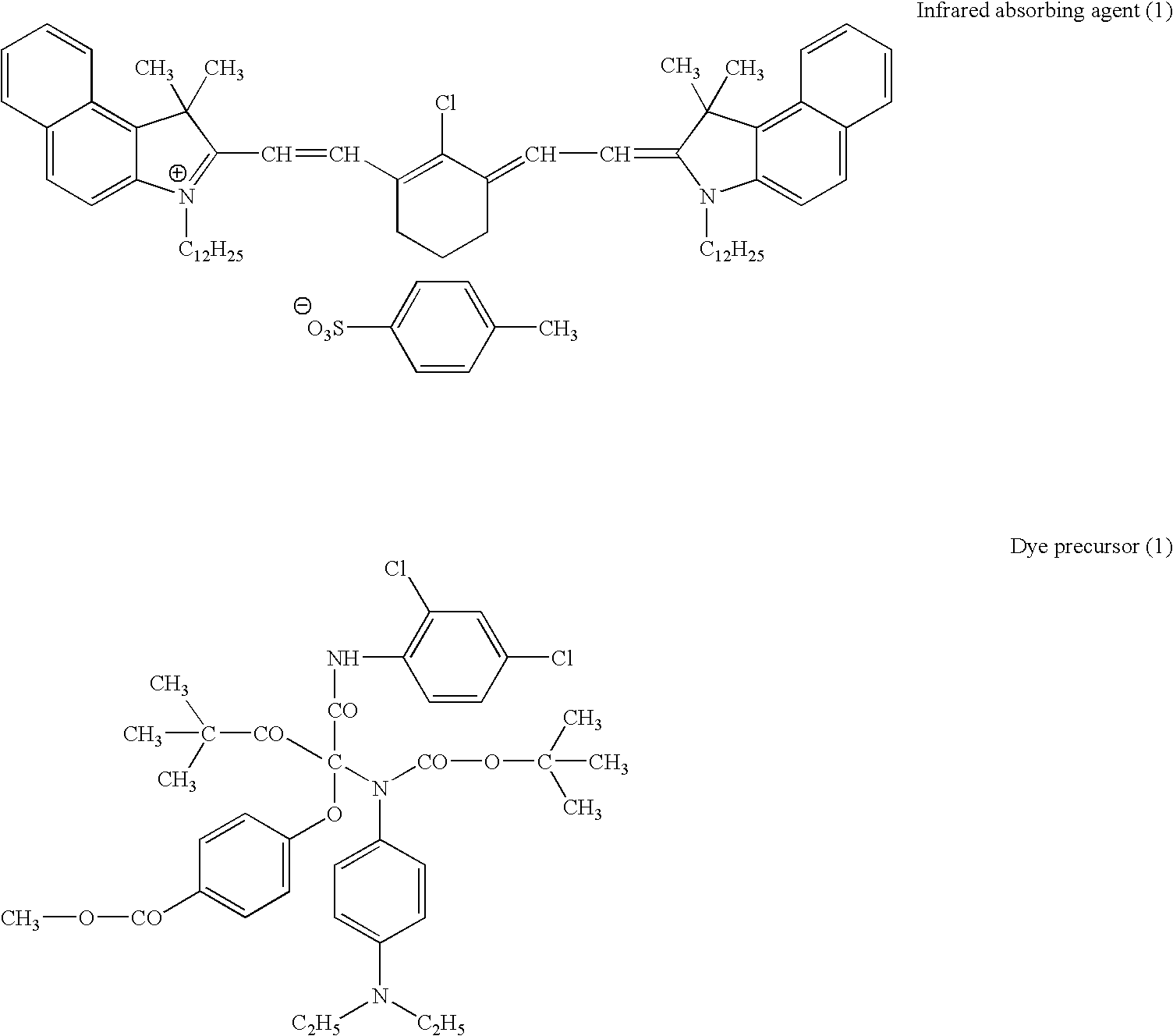Lithographic printing process
- Summary
- Abstract
- Description
- Claims
- Application Information
AI Technical Summary
Benefits of technology
Problems solved by technology
Method used
Image
Examples
example 1
(Preparation of Aluminum Support)
Melt of JIS-A-1050 alloy containing Al (99.5 wt. % or more), Fe (0.30 wt. %), Si (0.10 wt. %), Ti (0.02 wt. %), Cu (0.013 wt. %) and inevitable impurities (the rest) was cleaned and molded. For cleaning the melt, the melt was degassed to remove contaminating gases (such as hydrogen gas), and then filtrated through a ceramic tube filter. For molding the melt, the DC molding was carried out. The solidified molded metal was in the form of a plate having 500 mm thickness. The plate was planed off by 10 mm, and then subjected to uniforming treatment at 550° C. for 10 hours so that the intermetallic compounds might not agglomerate. After hot rolling at 400° C., the plate was annealed at 500° C. for 60 seconds in an annealing furnace. The plate was then subjected to cold rolling to obtain an aluminum plate having 0.30 mm thickness. The surface of the rolling mill was beforehand controlled to have such roughness that the aluminum plate might have a centra...
example 2
(Preparation of Microcapsule Dispersion)
In 40 g of ethyl acetate, 18 g of an adduct of trimethylolpropane with xylene diisocyanate (Takenate D-110N, Mistui-Takeda Chemicals, Inc.), 10 g of the following vinyl ether compound, 5 g of the infrared absorbing agent (1) used in Example 1, 4 g of the dye precursor (1) used in Example 1, and 0.2 g of an anionic surface-active agent (Pionine A-41C, Takemoto oil & fat Co., Ltd.) were dissolved to prepare an oil phase.
Independently, 80 g of 4 wt. % aqueous solution of polyvinyl alcohol (PVA-205, Kuraray Co., Ltd.) was prepared as an aqueous phase.
The oil and aqueous phases were mixed and emulsified with a homogenizer at 12,000 rpm for 10 minutes. To the obtained emulsion, 70 g of water was added. The mixture was stirred at room temperature for 30 minutes, and further stirred at 40° C. for 3 hours to prepare microcapsule dispersion. The microcapsule dispersion was diluted with distilled water to adjust the solid content of 18 wt. %. The...
example 3
(Formation of Image-Forming Layer)
The following coating solution was coated on the aluminum support prepared in Example 1, and dried at 80° C. for 90 seconds in an oven to form an image-forming layer in the dry coating amount of 1.0 g / m2. Thus, a presensitized lithographic plate according to the first embodiment was produced.
Coating solution for image-forming layerThe following infrared absorbing agent (2)0.05 gThe following dye precursor (2)0.05 gThe following polymerization initiator0.2 gThe following binder polymer (average molecular0.75 gweight: 80,000)Triacrylate denatured with ethylene oxide isocyanurate0.75 g(NK Ester M-315, Shin Nakamura Chemical Industries)The following fluorine containing surface active agent0.1 gMethyl ethyl ketone8.0 gTetrahydrofuran10 gInfrared absorbing agent (2)Dye precursor (2)Polymerization initiatorBinder polymerFluorine containing surface active agent
(Process and Evaluation)
The above-produced presensitized lithographic plate was imagewise ...
PUM
| Property | Measurement | Unit |
|---|---|---|
| Hydrophilicity | aaaaa | aaaaa |
| Hydrophobicity | aaaaa | aaaaa |
| Chemical structure | aaaaa | aaaaa |
Abstract
Description
Claims
Application Information
 Login to View More
Login to View More - R&D
- Intellectual Property
- Life Sciences
- Materials
- Tech Scout
- Unparalleled Data Quality
- Higher Quality Content
- 60% Fewer Hallucinations
Browse by: Latest US Patents, China's latest patents, Technical Efficacy Thesaurus, Application Domain, Technology Topic, Popular Technical Reports.
© 2025 PatSnap. All rights reserved.Legal|Privacy policy|Modern Slavery Act Transparency Statement|Sitemap|About US| Contact US: help@patsnap.com



